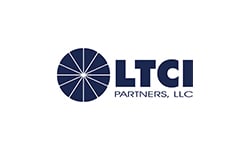What do you get when modernized Long Term Care Insurance products meet changing workplace needs and employee attitudes? An advantageous opportunity to grow your business, reach the middle market, and help protect more families from potential LTC needs.
Worksite benefits have long been a critical tool in helping employers attract top talent. What’s changed is that more employers want a variety of products to build benefit packages that are as diverse as today’s workforce – and there’s room for LTCi in this conversation.
Sure, you’ll face some challenges from decision-makers, but clearing hurdles is nothing new for seasoned LTC professionals. Here are three common objections that you can address with employers to change the way they think about LTCi.
“Our employees won’t be interested in LTCi”
Employers often misjudge the importance of certain benefits to employees. Today’s workers – spanning across four generations – have gotten a firsthand look at the challenges of providing long-term care, the impact it has on entire families, and the shortcomings of their parents and grandparents when it comes to LTC planning.
This translates to growing interest among consumers and an opportunity for agents.
In a recent LIMRA survey, 60% of respondents say they need LTCi coverage, with particularly high interest among millennials. That’s up from 55% in 2019[1].
When it comes to enrollments, LTCi has an overall average employee participation rate of 44% for all voluntary and employer contribution options, which is in line with popular benefits like an accident, critical illness, and hospital indemnity insurance. And LTCi’s average participation rate jumps to 58% for fully voluntary offerings and 83% for employer-paid coverage[2].
“Other employers aren’t offering it, so we don’t need it”
Nearly a quarter of all employers offer LTCi, and that number is poised for growth[3].
Thanks to the renewed emphasis on employee benefits, six out of every 10 businesses are considering adding new insurance benefits over the next two years – including 59% of small and 70% of midsize businesses. And 11% of those businesses are already considering offering LTCi[4].
As more workers turn to employers to help improve their short and long-term financial standing, LTCi can be a bigger piece of the workplace benefits puzzle. It’s an integral part of retirement and financial wellness planning, as it can give employees a reason to feel secure about their future finances.
For employers looking to diversify their benefit offerings, small and mid-sized businesses can use LTCi to level the playing field and even be a differentiator when competing for top-tier talent.
“Offering an LTC program is complicated”
Employers want simple. And unfortunately, they may still associate LTCi with the complicated reputation often tied to its legacy products.
The truth is, today’s benefit offerings need to be simple and easy to understand to facilitate a strong enrollment, and worksite LTCi is meeting this need.
Modern worksite offerings aim to improve the customer experience and make life easier for employers, benefit administrators, and employees. Carriers have enhanced quoting, applications, and other online tools that encourage paperless selling; simplified issue underwriting; and online employer administration to create a streamlined user-friendly experience from application through enrollment.
And in terms of products, carriers have made benefit decisions easier for families by focusing on straightforward plan designs, affordable price points, and reducing the number of riders.
LifeSecure is dedicated to designing straightforward products that simplify buying and selling, especially at the worksite – or as we like to say, “we take the work out of the worksite.” Our worksite LTCi can be offered to as few as 10 employees, which can create new business opportunities for you by opening more of the employer market. It also offers applicants just four simple plan design choices to simplify decision-making and provide flexible options to meet their coverage needs.
Cindy Harris is the Senior Director of Sales at LifeSecure, which is a NAIFA partner. Learn more about the company here and click here to learn more about LifeSecure’s worksite LTCi.
[1] 2022 Insurance Barometer Study, LIMRA, Life Happens, 2022
[2] Facing the Pandemic Challenge: Trends in the Employee Benefits Market, LIMRA 2022
[3] Facing the Pandemic Challenge: Trends in the Employee Benefits Market, LIMRA 2022
[4] The Market Potential for Workforce Benefits, LIMRA 2022















-CMYK.png?width=250&name=LifeSecureLogo(F)-CMYK.png)






